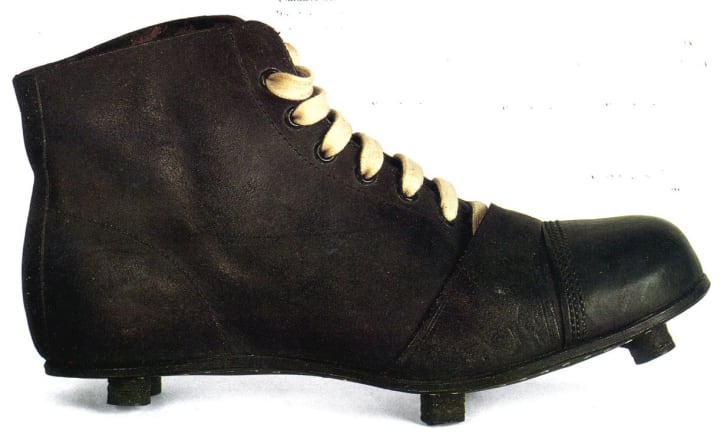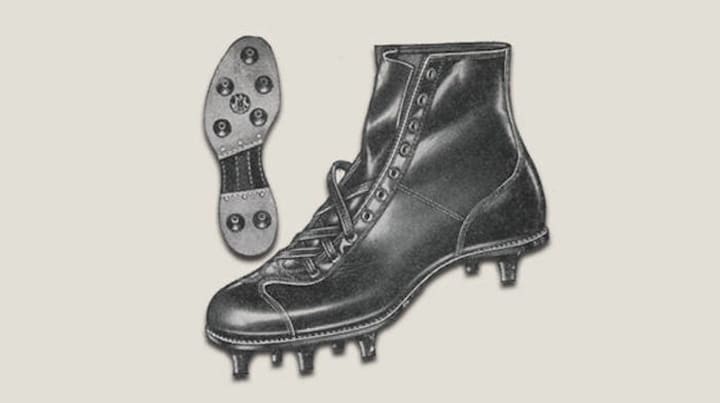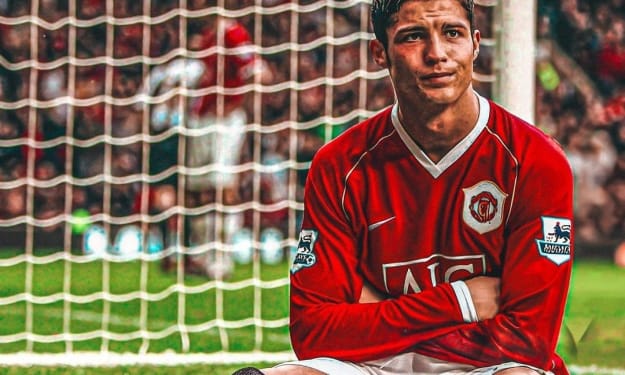Evolution of the Soccer Cleat
The evolution of the soccer cleat began before rules about foot wear.

You might take a pair of soccer cleats for granted, yet the history of soccer cleats is pretty diverse and interesting. In this brief article, we'll look at the evolution of the soccer cleat and some of today's best options. Whether you are in the market for a pair of soccer cleats or simply curious about these odd shoes, you'll find a lot of interesting details.
Many of us have used the phrase "get a grip" when urging someone to take a clearer position in an argument or situation, but oddly enough, soccer players have been seeking to do just that—get a grip, a better grip—since the sport's earliest days. As one expert explained, "players were constantly looking for ways to get better traction on the field. Many of them, unfortunately, proved to be a bit dangerous to other players. This led to the FA outlawing outsoles embellishments." In other words, they did not want players putting things on to the bottom of their shoes in order to obtain a good grip and get more control of their feet in any conditions. It's a contrast to today, where you can get custom insoles for your cleats.
It was not because they did not want players to have any advantages; it was that even with ankle high boots, the dangerous materials led to a lot of risk for injury, if not actual injury. The evolution of the soccer cleat, though, began even before rules about foot wear.
The Early Days of Cleats

Today, we think of soccer as one of the most popular sports in the world, and it is played in almost every country. It is believed to date all of the way back to the 3rd century BCE, though it really emerged as a sport during the reign of the English King Henry VIII. It was he who commissioned the first pair of ankle high boots crafted of extremely rigid leather, and because it was so stiff, the cleats were essential to being able to move easily.
Because so many players did not have kingly wealth, they took it upon themselves to "make" their own. And, it was back in 1863 when the FA (English Football Association) found itself in need of some guidelines to prevent players from sporting shoes or boots that might have "nails, iron plates, or gutta-percha on the soles."
Of course, as "necessity is the mother of invention," it did not take long for innovators to find workable solutions. It was as early as the 1880s that cleats were first being used, turning normal shoes (work boots, actually) into soccer shoes. So, the first football boot was just a work boot with a leather band attached to the outsole and with a bit of traction thanks to the leather studs it featured.
By 1891, FA's rules clearly dictated the design of soccer boots and explained that studs could not be any longer than one-half of an inch. Then, cleats or studs had to be rounded, rather than pointed, and around 1925 commercial shoe makers decided to produce soccer shoes. It was the German firm, Dassler Brothers Shoe Factory, owned by German brothers Adolf and Rudolf that designed not only commercial cleats, but shoes with "interchangeable studs" that allowed different cleats for different conditions.
The World Wars would slow the evolution of the soccer cleat, but not stop it. Throughout those years, players, teams, and designers were looking for ways to innovated. The soccer cleats' evolution remained fairly steady until the post-World War II period when the Adidas brand first emerged and its company founder (none other than Adolf Dassler—Rudolf went on to create Puma, which itself was a popular brand among players) created a soccer shoe with screw-in cleats. He even supplied the "West German National Team at that year’s World Cup in Switzerland," in 1954 and they beat Hungary to win; many say it was due to the use of the cleats.
The Cleat Evolves

Of course, further advancements in the world of soccer meant that cleats had to evolve alongside them; which is why the evolution of the soccer cleat took a unique turn in the 1960s. At that time, artificial turf appeared and cleats began to be of little use against the design of the material. Rather than long and rigid cleats, the soccer cleat had to be redesigned to grab and give traction, leading to smaller rubber cleats spread out over the sole.
And in 1979, one of the most recognizable phases osoccer cleats' evolution occurred, but not in the cleats themselves. It was then that Adidas produced the "Copa Mundial," which still rates today as the best selling soccer cleat of all time. Made of premium kangaroo leather, which is chosen for its ability to flex and "break in" far faster than other leathers, it was crafted in the iconic black base with three white stripes that is such a staple of soccer fields around the world. There are a lot of pros and cons to leather vs synthetic cleats today, but nothing quite beats kangaroo leather.
The soccer cleats' evolution does not end there, since the 1980s saw a return of boots, and this culminated in the release of the famous Adidas Predator in the 1990s. It should not be overlooked that lots of soccer players began to endorse many big brands, including Nike, Adidas and Puma as early as the 1970s.
In fact, the emergence of new names, such as Nike, is considered another of the most impactful issues in the evolution of soccer cleats. Immediately, the upped the ante with their Tiempo model used in the 1994 World Cup and which was endorsed by most of the Brazilian team.
Since then? Players and consumers alike have driven the evolution of the soccer cleat in less serious ways. Mostly emphasizing fashion, they have pressed makers for wilder colors, more noticeable logos, and the demand for lighter and bladed cleats.
If you have watched the evolution of cleats over the past decades, you'll see more and more engineering, brighter colors, and logos and a constant drive to make players faster and more nimble than ever… what would King Henry think? While you're learning how to clean your soccer cleats properly, remember their history.
About the Creator
Stephen Cleary
Either playing soccer, working out, or at the movies.






Comments
There are no comments for this story
Be the first to respond and start the conversation.